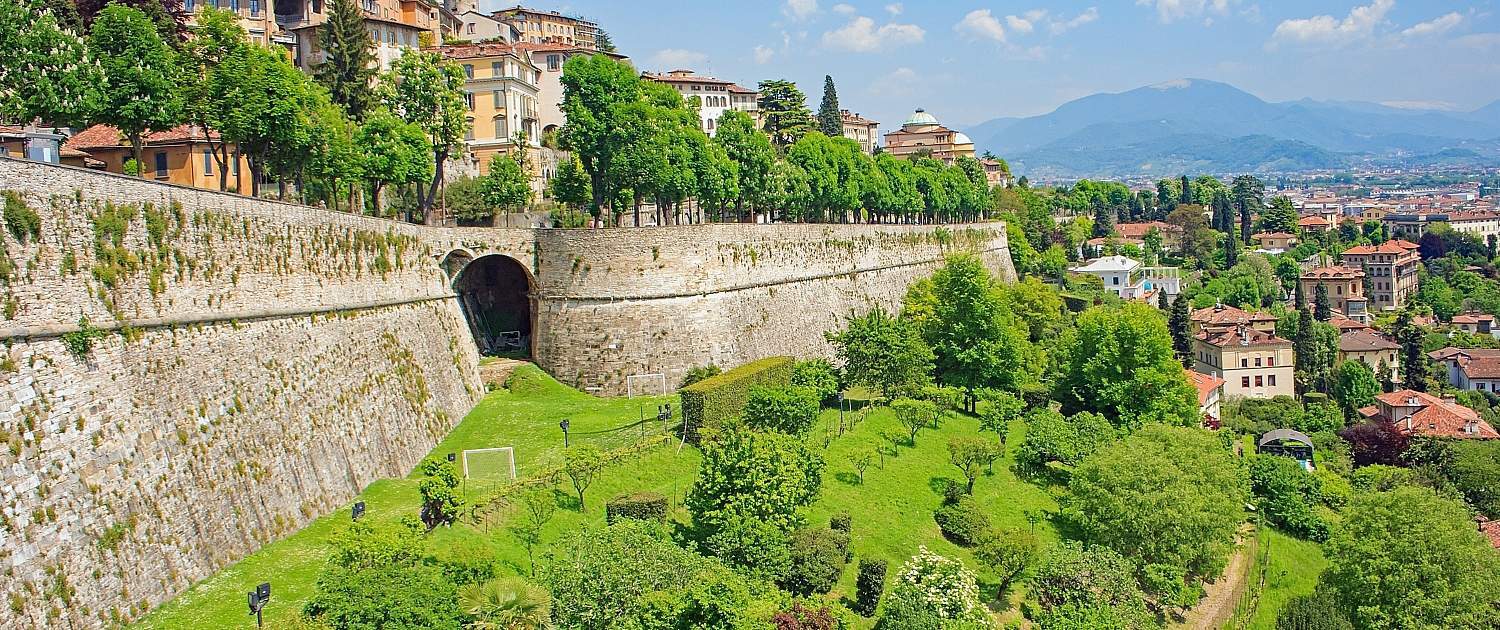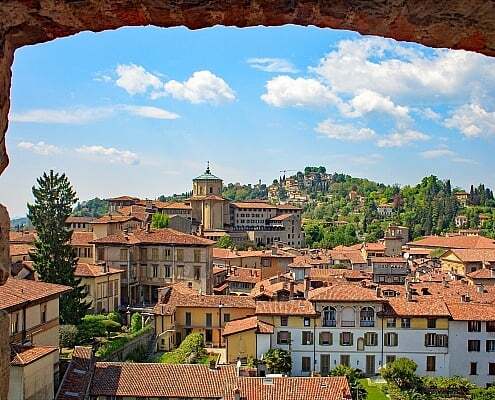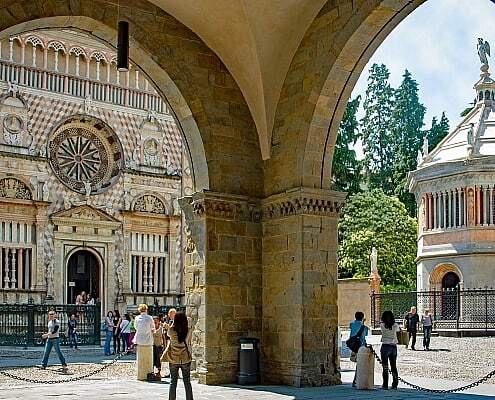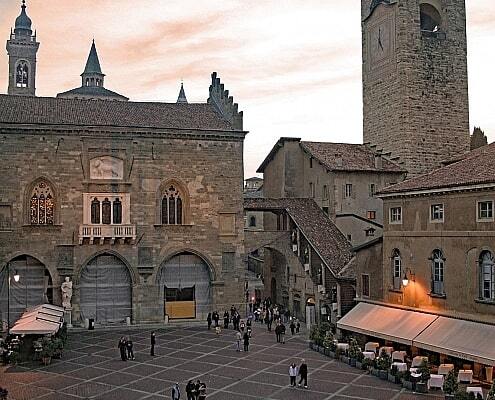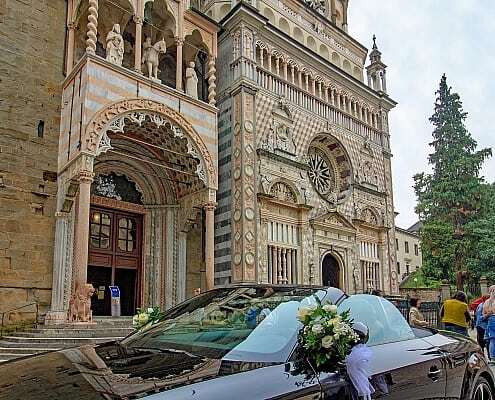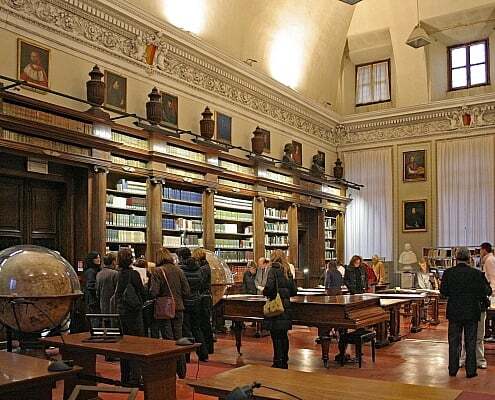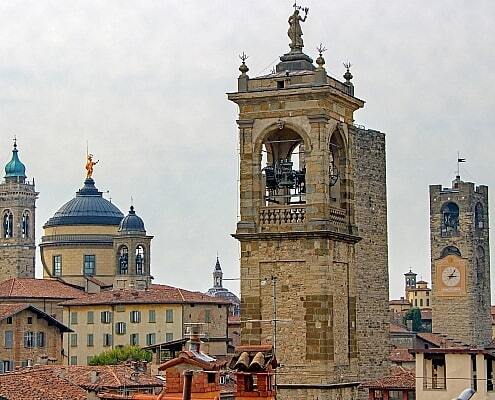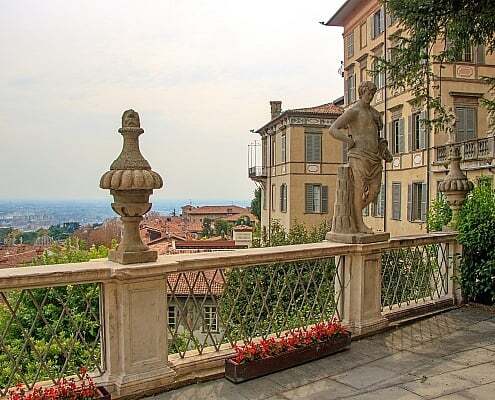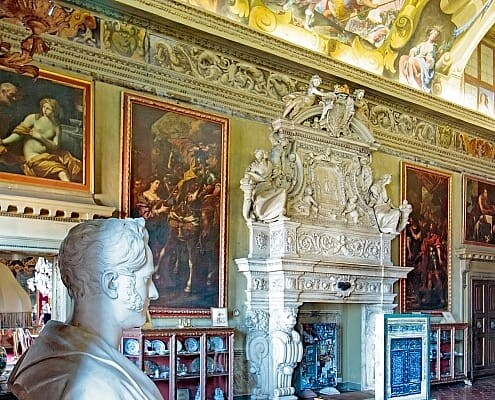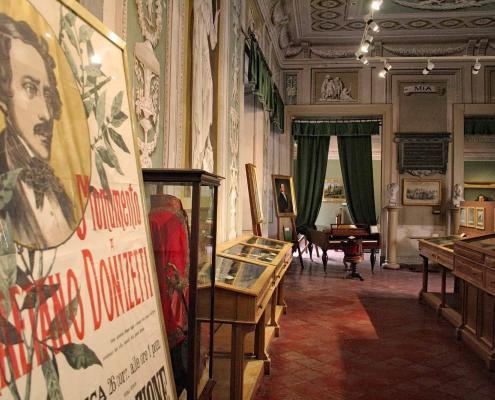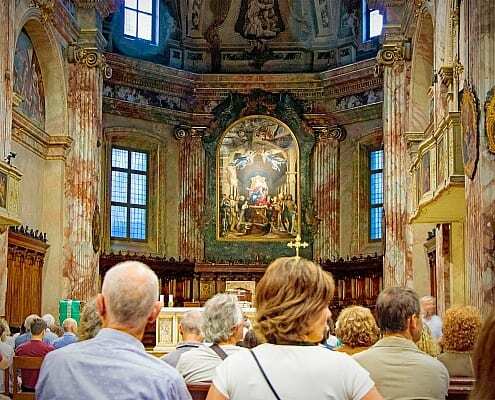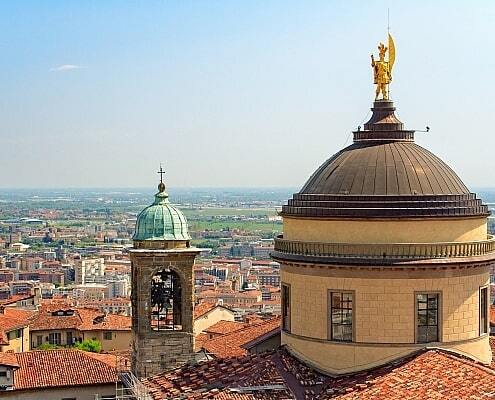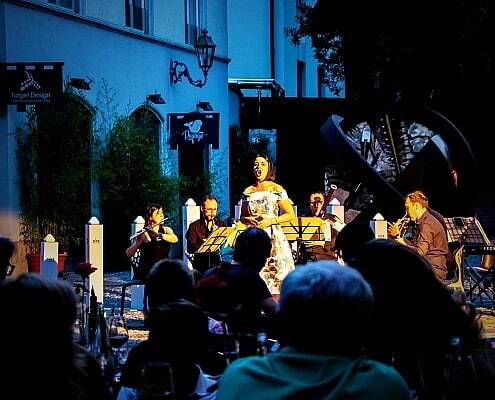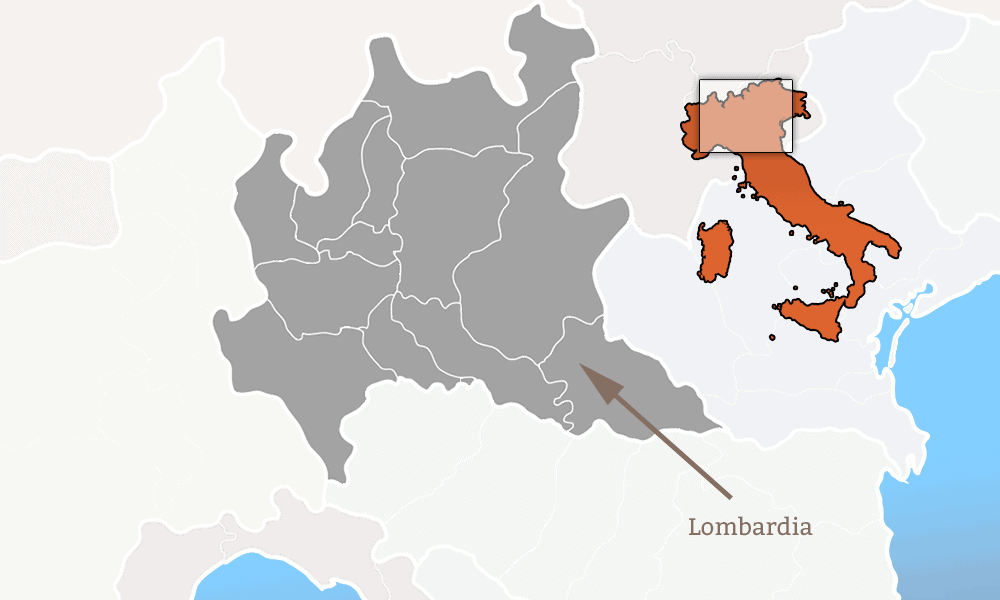Best Places to Visit in Bergamo
Visit the Upper Town of Bergamo – Città Alta
The Città Alta is one of the most beautiful things to see in Bergamo that you should definitely visit. If you have reached the upper town of Città Alta in Piazza Mercato delle Scarpe on the hill with the over a hundred-year-old cable car, you will not only be overwhelmed by the view over the Po Plain, but also immerse yourself in a world of narrow historical streets with beautiful little ones Shops and long-established restaurants and bars.
Upper Town of Bergamo Città Alta
The Città Alta is one of the most beautiful things to see in Bergamo that you should definitely visit. If you have reached the upper town of Città Alta in Piazza Mercato delle Scarpe on the hill with the over a hundred-year-old cable car, you will not only be overwhelmed by the view over the Po Plain, but also immerse yourself in a world of narrow historical streets with beautiful little ones Shops and long-established restaurants and bars.
The Venetian City Wall
The Venetian city wall is an attraction of Bergamo. The medieval fortification with a length of over 6 km and a height of up to 50 m. On the terraces of the old Venetian walls there are green areas for walks and benches with fantastic panoramic views. Enjoy one of the wonderful sunsets over the Po Valley in peace and quiet.
Construction of the enormous Venetian city wall began in 1561 as a fortification to deter enemies from a siege of Bergamo. For the construction, the cathedral of Sant’Alessandro, the patron saint of Bergamo and numerous houses and farms on the mountain slopes had to be demolished and thousands of people lost their homes.
It took 27 years to build the city wall, but it was never used for military purposes. But it served as a customs post at the city gates. Thanks to the Venetian city wall, the impregnable Città Alta was completely preserved. In 2017 the Venetian city wall was recognized as a UNESCO World Heritage Site.
The Four Medieval City Gates
All four medieval city gates bear the Venetian symbol of the winged lion of San Marco. The city gates went to the roads connecting the cities.
- The Porta Sant‘Alessandro in the northwest connected the road from Bergamo to Lecco and Como
- The Porta San Lorenzo in the north led to the countries beyond the Alps. The city gate was later renamed Porta Giuseppe Garibaldi.
- The Porta Sant‘Agostino in the east went towards Venice.
- The road from Porta San Giacomo in the south ran to Milan. With its white marble cladding, this city gate is the most monumental and elegant.
Piazza Vecchia in the Upper Town
The center of the upper town of Bergamo is in Piazza Vecchia. The beautiful square is one of the best places to visit in Bergamo. It is lined with restaurants and bars and you can’t help but let yourself be captured by the enchanting atmosphere and admire the architecture of the surrounding palazzi. In the middle of the square, there is a stone fountain, which was named after the Venetian patrician family Contarini.
The Piazza Vecchia was the representative center of Bergamo for centuries. This also results from Roman history, where the Roman Forum was located at this point. Some of the excavations are still in the old library today.
The Biblioteca Civica is housed in the white Palazzo Nuovo on the front of Piazza Vecchia. The Biblioteca Civica Angelo Mai is one of the oldest libraries in Italy. To the side is the Palazzo del Podestà, the palace of the Venetian mayor Alvise Contarini with the Museum of History. The Piazza Vecchia is dominated by the 53-meter high tower Torre Civica. You can climb the bell tower and experience a really breathtaking view not only of Bergamo but also, if the visibility is good, of the entire Po-Plain, the Padana, to the surrounding mountains.
Torre Civica
Torre Civica is a 53 meter high tower in Piazza Vecchia. You can climb the bell tower and experience a really breathtaking view over Bergamo and, if the visibility is good, over the entire Po plain, the Padana, to the surrounding mountains.
The ascent to Torre Civica can be seen both on foot by climbing the 230 steps or comfortably with the elevator. It is the largest bell in Lombardy and every day at 10 p.m., 100 bells ring to commemorate the closing of the city gates during the Venetian siege. So it is worth spending the night in Bergamo or at least having dinner in one of the beautiful traditional restaurants to experience the carillon.
Palazzo della Ragione
At the end of Piazza Vecchia, the Palazzo della Ragione, the Palace of Justice, separates the center of political power from the center of religious power.
The ground floor of the Palazzo della Ragione is designed as a portico. Inside is a small square with a meridian on the floor. It shows the coordinates of the point at which it is located (longitude 27 ° 29 ‘and latitude 45 ° 43’) as well as the height above sea level (360.85 m).
If you cross the arches of the Palazzo della Ragione you come to the Cathedral Square, where two places of worship can be found.
Santa Maria Maggiore Basilica
The more important cathedral is the Basilica of Santa Maria Maggiore. Construction began in 1137 on the site of an earlier Roman temple.
The reason for the construction was the hardship of the inhabitants of Bergamo in the early years of the 12th century as a result of a great drought and the plague raging in Europe. They implored the Blessed Virgin for help and decided to build the church.
For reasons of space, the Basilica of Santa Maria Maggiore has a very special style. The traditional church facade is missing, but the church has two facades: a southern facade with white lions and a northern facade with red lions that support the two pillars of the archway.
Inside there are frescoes, including the tree of life of the life path of Jesus Christ and valuable tapestry tapestries. The wood inlays, which were made according to designs by the famous painter Lorenzo Lotto, are special masterpieces. These inlaid works are protected by metal plates and only shown publicly on special occasions or holidays.
In the cathedral is the tomb of the world-famous composer Gaetano Donizetti, who was born in Bergamo.
Baptistery of the Santa Maria Maggiore Basilica
The Baptistery is a small octagonal building surrounded by red columns made of Veronese marble. It is located on the right in front of the church next to the Colleoni Chapel. Inside, next to the octagonal baptismal font, there are the statues of San Giovanni Battista and Giovanni da Campione, the walls are decorated with stories from the life of Jesus Christ.
Colleoni Chapel
The Colleoni Chapel is undoubtedly one of the most important buildings in Bergamo. It is located next to the Basilica of Santa Maria Maggiore and was enforced by Colleoni with some power against the will of the basilica.
The red and white marble facade of the Colleoni Chapel is a masterpiece of the Italian Renaissance. The interior is filled with works of art.
Bartolomeo Colleoni was born in Bergamo between 1380 and 1395. He made a lot of money as a mercenary leader in various armies, namely those who paid the best for it. He used his money to build numerous castles and a sewer system. In the end he had the beautiful chapel built as a mausoleum in his honor with his equestrian statue and the marble sarcophagus. His daughter Medea also rests in the chapel in a dignified grave. Colleoni died in 1475 and has been in the chapel ever since.
One superstition has it that touching the coat of arms symbol on the gate at midnight brings good luck. Even if it shouldn’t be, it’s a great opportunity to take a night stroll through the Upper Town città alta.
Bergamo Cathedral
The Cathedral of Sant’Alessandro of Bergamo is to the left of the Basilica of Santa Maria Maggiore, also in the Cathedral Square behind the Palazzo della Ragione. The facade looks rather simple compared to the neighboring basilica and the Colleoni chapel. The cathedral was rebuilt in the 15th century on the foundations of earlier church buildings as a single-nave church with the floor plan of a Latin cross. For this, none other than the Florentine architect Filarete was commissioned. Filarete is also known for the tower at the entrance to Castello Sforzesco in Milan, the Torre del Filarete.
Inside you can see paintings by important Italian artists. The right transept leads to the chapel of Pope John XXIII, where a bronze statue and relics of the Pope are on display.
On the main altar are the remains of the holy martyr Alexander in an urn.
The golden figure of St. Alexander, the protector of the inhabitants and patron saint of Bergamo, dominates the top of the dome.
Rocca
In the middle of the old town, just a few meters from the cable car, in the direction of the hill of Sant’Eufemia, Piazza, you go up to the Rocca, a fortress from the 14th century. You pass the small church of San Rocco. On the highest hill of Sant’Eufemia, the cold ones had already settled in the 4th century BC as the first inhabitants of Bergamo. From the tower of the Rocca you can enjoy a view over the upper town and the plain as far as Milan and on the other side over the mountains of the pre-Alps.
Noble Palaces in Bergamo
In the upper town of Bergamo there are many palaces of old noble families. Most of them are still family-owned and inhabited. You can see some of the palaces. As an example we present the Palazzo Terzi, which Hermann Hesse was very enthusiastic about.
Palazzo Terzi
In 1913, the writer Hermann Hesse stumbled across the small Piazzetta Terzi in front of the palazzo of the same name. Here he found “one of the most beautiful corners of Italy, one of the many little surprises and joys that are worth traveling for.” Through the door of the palazzo “one could see an inner courtyard with plants and a lantern, behind which two large statues and an elegant balustrade clearly stood out in a dreamy atmosphere and in this narrow corner between the walls evoked the premonition of the infinite distance and vastness of the area over the Po plain “.
Indeed, from the terrace of the palace the visitor has a wonderful view. The Palazzo Terzi consists of two buildings that are entered via a common courtyard, which is adjoined by a wonderful terrace garden.
The first half of the house from 1631 belonged to the Marquis Luigi Terzi and his young wife Paola Roncalli. Over a hundred years later, Marquis Gerolamo Terzi married his Giulia Alessandri and the second residential wing was built.
Inside the Palazzo Terzi, the wonderful rooms can still be seen in their original state. There is the Salottino degli Specchi mirror hall, the red hall, the hall of honor, rooms in the Baroque style of the 18th century. In the so-called Tiepolo Hall there is a painting in the middle of the ceiling that is attributed to Tiepolo.
The Palazzo Terzi can be visited on certain dates and it is also available for events on request.
San Vigilio
A second cable car starts near Porta Sant’Alessandro, at Colle Aperte, and continues up to the San Vigilio hill with the Belvedere viewpoint.
At a height of 496 m, the San Vigilio Castle dominates the upper town. The fortifications of San Vigilio Castle existed long before the Venetian city walls. Presumably the Romans already had a defensive castle here. The floor plan is in the shape of a star with the four towers Agneta, Belvedere, Del Ponte and San Vigilio. A secret passage was found under the castles that can be visited.
From the district with the church of San Vigilio you have a breathtaking panoramic view; When the visibility is good, you can look over the Po Valley to Milan and see the panorama of the pre-Alpine belt to the north.
Donizetti Museum and Birth House of Gaetano Donizetti
Gaetano Donizetti was born on November 1797 in the upper town of Bergamo Alta. The Donizetti family was poor and lived in the basement of a five-story building from the Middle Ages. On the occasion of the first 100th anniversary of Donizetti’s death (1948) and 1973, the basement apartment was restored and opened to the public. In 2009 the building, which has now been completely restored by the Donizetti Foundation, was opened to the public.
The Donizetti Museum shows stations and exhibits from the life of Bergamo’s most famous son. Since his parents could not provide an education for the gifted son, the German Johann Simon Mayr, who also lived in Bergamo, took over the cost of music education for the gifted Gaetano and thus enabled a gifted artist to train and his beautiful music for posterity.




